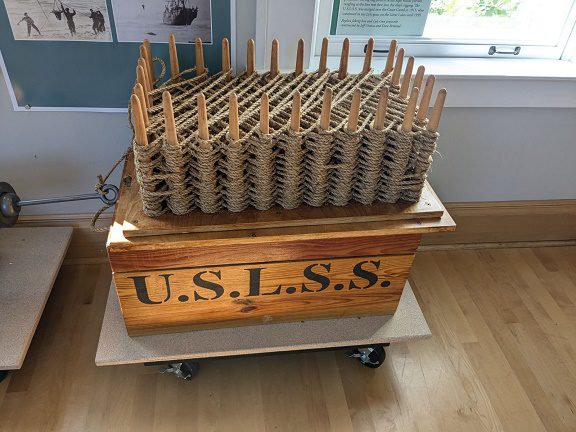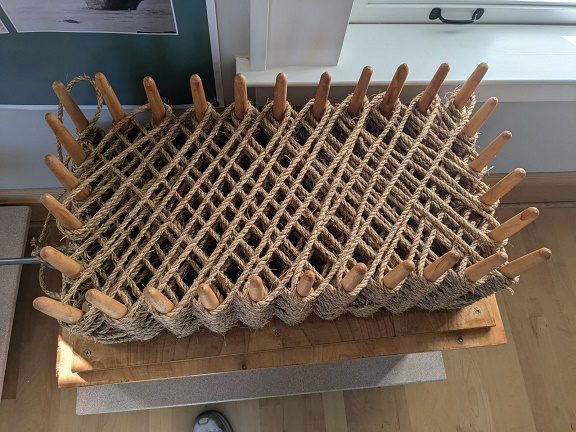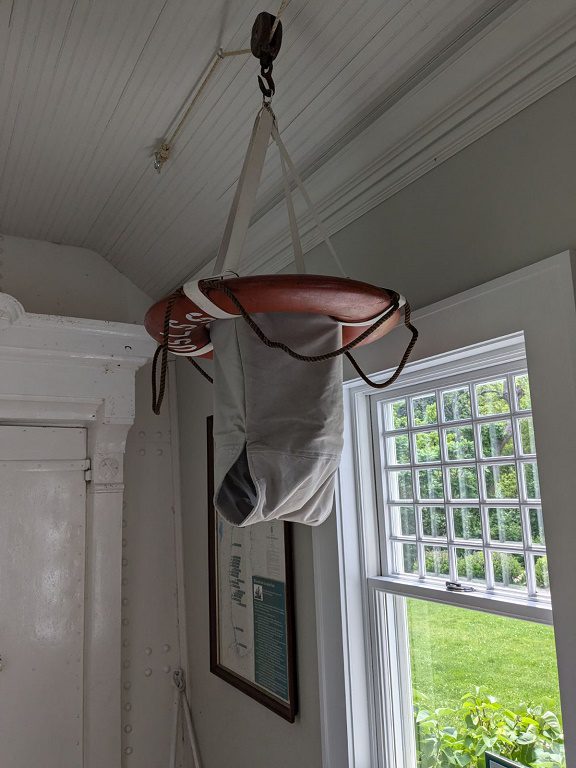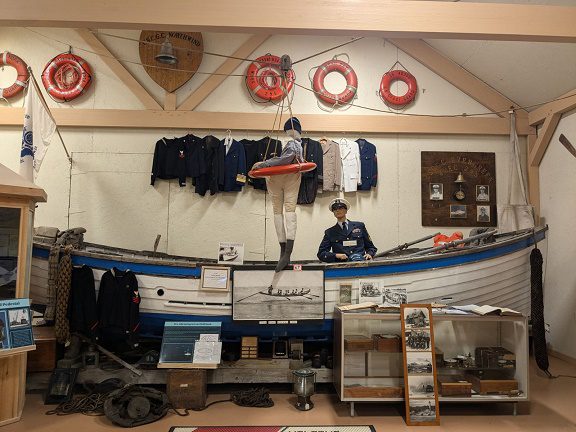By James Heinz
Most guns are designed to take lives. The WMHS collection contains a gun that saves lives. You can see it at the North Point lighthouse in Milwaukee, Wis., where it is on loan from WMHS.
In times past, ships would often strand in the surf close to shore. To rescue their crews before their ships broke up and the crews drowned, in 1877 Sumner Increase Kimball, the first and last head of the U.S Lifesaving Service, commissioned U.S. Army lieutenant David Lyle to design a gun that could throw a line out to a stranded ship.

The Lyle Gun on loan to North Point Lighthouse
Lyle designed a bronze, smooth bore muzzle loading gun with a 2.5 inch diameter bore that weighed almost 200 pounds. Wikipedia tells us “Projectiles for the gun were made of cast iron with a wrought iron eye bolt screwed into the base as an attachment point for the shot line. The projectile was 15+3⁄4 inches long and weighed 19 pounds. It was placed into the 24-inch-long gun barrel so the eye bolt with the line attached was sticking out. After firing, the projectile rotated so that the eye bolt and line were trailing.”
“The gun had a large recoil from firing. A standard charge of 1.5 ounces of a special type of black gunpowder would knock the gun back 6 feet. The maximum rescue charge of 8 ounces would send the gun flying back even further.” Maximum range for the Lyle gun was 700 yards.
Photo at top of page: Lyle Gun with its Faking Box at North Point Lighthouse
The lifesaving apparatus consisted of 14 parts, including the gun. It was moved by six surfmen on a beach cart with extra-large iron wheels so the cart would not get stuck in the sand.


Faking Box with its “faked” zig zag pattern
The purpose of the gun was to launch a light braided linen shot line over the ship and then pull the line back towards the shore, snagging the line on the stranded vessel. In order for the shot line to pay out smoothly, the shot line had to be stored in a specific pattern inside a faking box. The faking box had a series of wooden spindles around which the shot line was wound or “faked” in a zig zag pattern.
If the Lyle gun could not be used, the surfmen could resort to another high tech device to get the shot line out to the stranded vessel: a wooden stick called a heaving stick. Surfmen would have to wade out into the raging surf and try to heave the stick with the shot line attached onto the ship.
Once the shot line was aboard the vessel, a heavier manila hawser would be attached to the shore end of the shot line, and the crew of the vessel would pull the shot line with connected hawser aboard.

Breeches Buoy at North Point Lighthouse
Once the hawser was aboard, a breeches buoy could be sent out to the stranded vessel in the same way as laundry on an old fashioned clothes line with pulleys. A breeches buoy was a life ring with a pair of canvas short pants sewn to it. Someone who was to be rescued climbed into the pants and was pulled ashore by hand while suspended over the raging sea.
A North Point lighthouse volunteer constructed a replica of both a faking box and a breeches buoy, which are displayed next to the WMHS Lyle gun.
Lifesaving Service regulations required lifesavers to successfully practice with the Lyle gun and associated gear every Thursday at 2 p.m. or they would be dismissed from the service. The Lyle gun was replaced with rockets in the 1950s.

Rogers Street Fishing Museum Display
Additional Lyle guns/breeches buoys/faking boxes can be seen at the Wisconsin Maritime Museum in Manitowoc, Wis., and the Rogers Street Fishing Museum in Two Rivers, Wis.
Photos by James Heinz
_____________
James Heinz is the Wisconsin Marine Historical Society’s acquisitions director. He became interested in maritime history as a kid watching Jacques Cousteau’s adventures on TV. He was a Great Lakes wreck diver until three episodes of the bends forced him to retire from diving. He was a University of Wisconsin – Milwaukee police officer for thirty years. He regularly flies either a Cessna 152 or 172.

